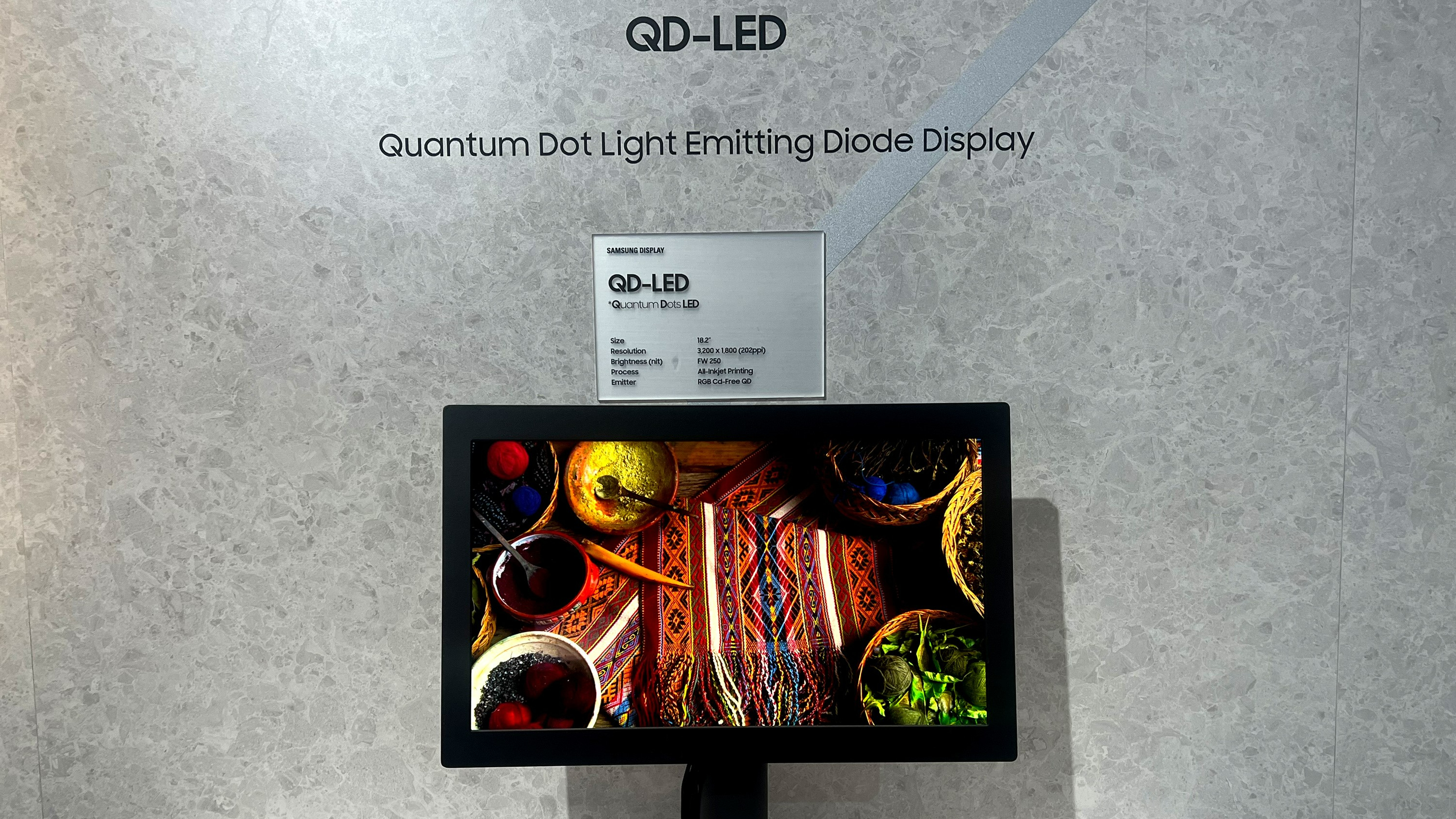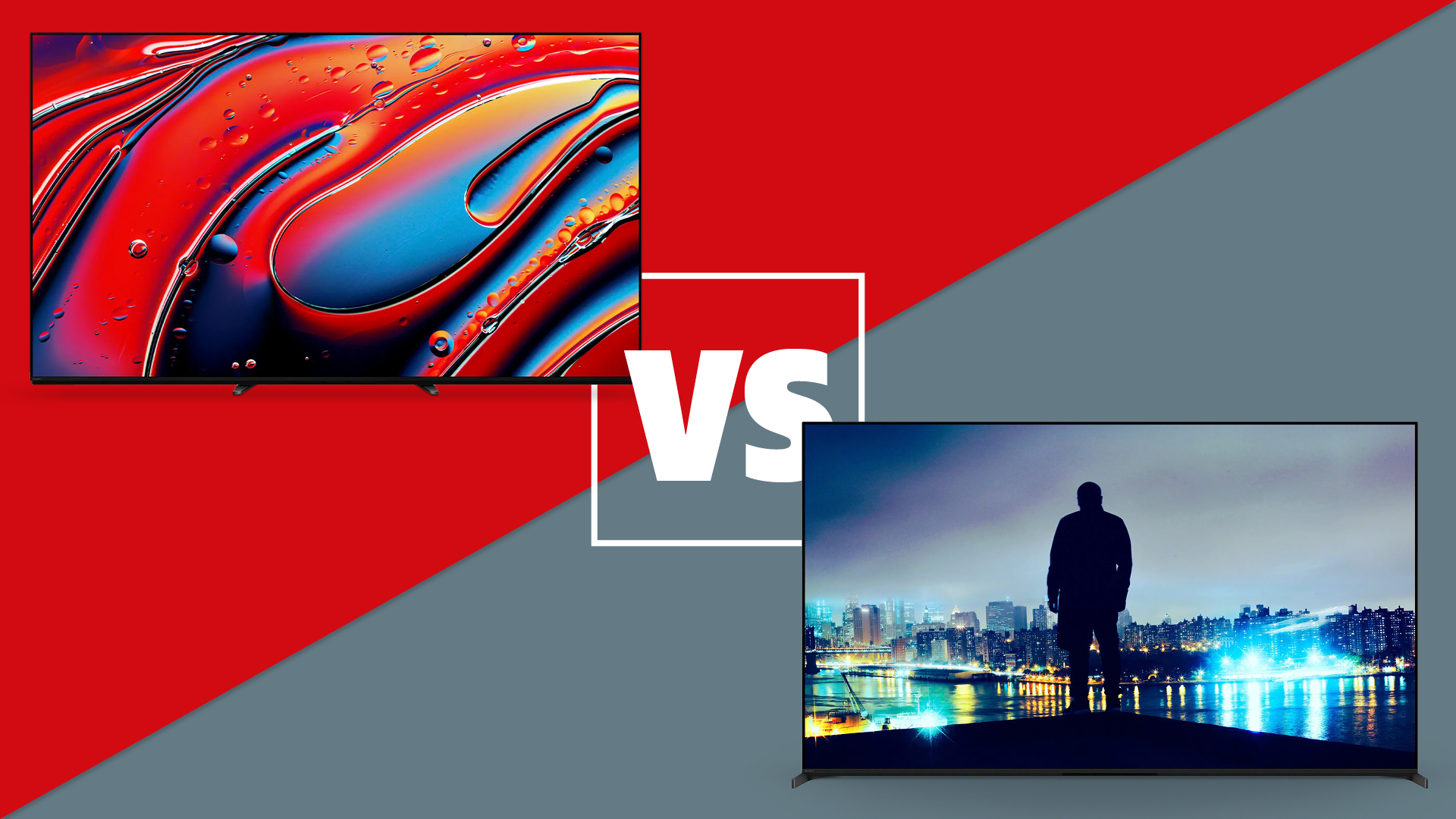Samsung Display shows off its first QD-LED display – could this be the downfall of OLED?
Could QD-LED be the next big thing in TV tech?

Display Week 2024 has provided some interesting developments in the world of screen technology from the likes of LG Display and TCL CSOT, but now it's Samsung Display's turn to flaunt its latest advancements. This year it seems like QD-LED, or NanoLED as it's sometimes known, is the hot topic – and it looks like Samsung is getting in on the action.
It has shown off the largest QD-LED display to date, and while it may not be TV-sized yet, it's certainly a step forward. It measures 18 inches, features a 3200 x 1800 resolution, and is rated at 250 nits of brightness. While this may not sound wildly impressive on paper – this is a rather small display with a fairly underwhelming brightness figure – it could hint towards the future of TV display tech.
Much like OLED, this panel technology is self-emissive, meaning light is directly emitted through the QD RGB pixels. Samsung Display claims that the quantum dots deliver a "wide colour gamut and high colour accuracy" resulting in a "superior viewing experience".
Interestingly, Samsung is using the same Inkjet Printing manufacturing process as TCL CSOT. It says that the "stable material properties of quantum dots" allow for a highly efficient and low-cost manufacturing process in large quantities. This could well be a hint at things to come regarding this panel technology translating to TVs in the near future.
That being said, QD-LED is still in its prototype stage. Nanosys, the company that develops this display technology, was recently acquired by Japanese company Shoei Chemicals with plans to accelerate the development of this display technology. It aims to get this panel tech into full production by 2025 or 2026 at the very earliest, so we don't expect to see a NanoLED TV launch imminently.
QD-LED wasn't the only new advancement from Samsung Display, with a selection of intriguing displays on show elsewhere. Some of these included an ultra-thin oxide display with a variable refresh rate of 1Hz to 120Hz and the world's first 4K 240Hz QD-OLED gaming monitor.
MORE:
Get the What Hi-Fi? Newsletter
The latest hi-fi, home cinema and tech news, reviews, buying advice and deals, direct to your inbox.
Read our full Samsung S95D review
And check out the full Samsung 2024 TV range
Lewis Empson is a Senior Staff Writer on What Hi-Fi?. He was previously Gaming and Digital editor for Cardiff University's 'Quench Magazine', Lewis graduated in 2021 and has since worked on a selection of lifestyle magazines and regional newspapers. Outside of work, he enjoys gaming, gigs and regular cinema trips.
